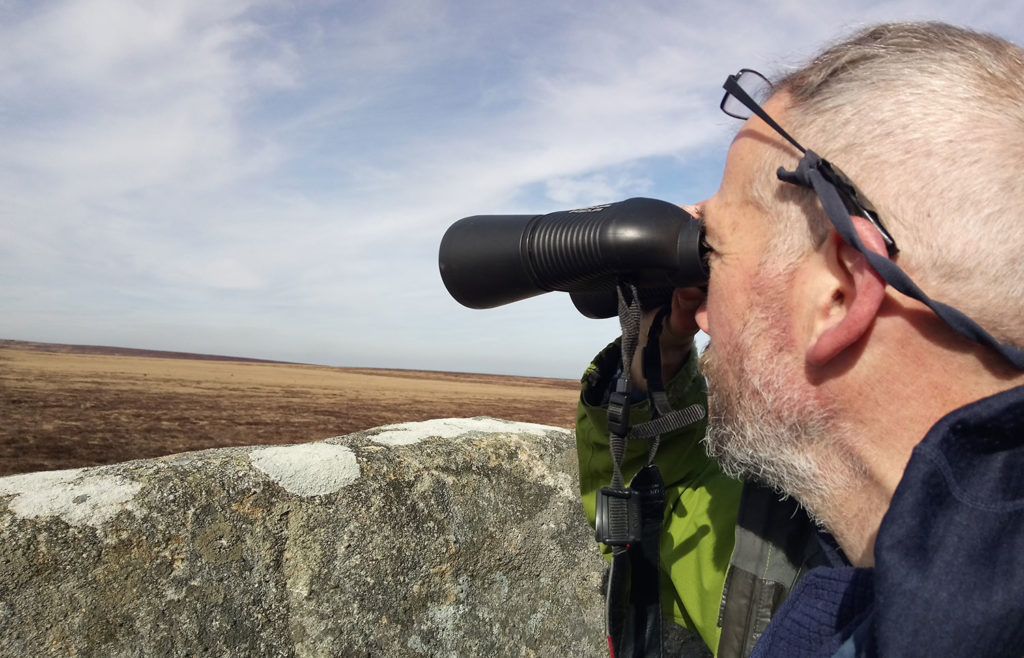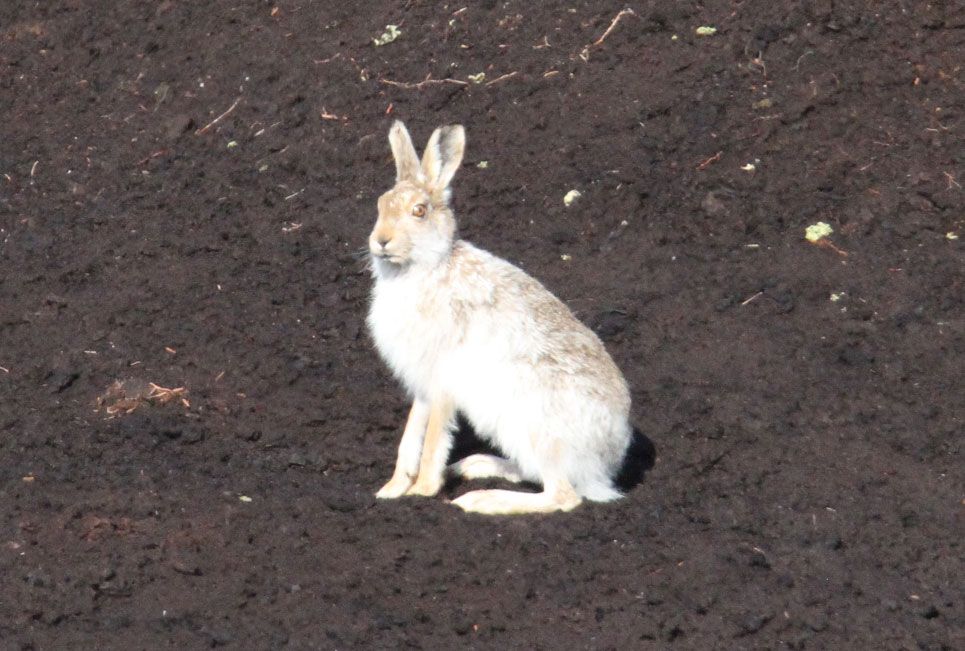Surveying the elusive mountain hares
Having completed all his field work for his PhD researching a small population of mountain hares in the Peak District, we caught up with Carlos Bedson of Manchester Metropolitan University to find out how his work is progressing. Carlos has now gathered sightings of mountain hares over several years. This has involved many grueling hikes across wild, cold, exposed moorland during late winter months.
Concerns have been expressed for some time by many landowners, natural historians and the Wildlife Trusts who are all worried that mountain hares are in decline. And until Carlos began his study in 2017, no one had surveyed the mountain hares here in such a detailed way for nearly twenty years. It was vital to find out how the hares were faring.
Mad March hare
Hanging up his survey binoculars for another season, and before finishing his analyses, Carlos relayed to us one particular memorable adventure:
‘On a March afternoon in 2018 I was surveying one of the straight line transects which forces me into treacherous bogs and marshes: horrible places no sensible human being would want to go. Cresting the hill, I realised there was something rather unusual going on. Gazing into the peat bogs my eyes widened in surprise: the mad March hares were out! Capricious hares were running in and out, gallivanting, dancing, chasing one another. Luck was on my side – I had my long lens video camera with me. I was delighted to be able to briefly capture their incredible antics. It was astonishing! Since then I’ve been approached several times by film makers, asking where to film mountain hares scampering about with one another. I’ve revisited that same spot some fifteen times, even camping out there for three whole days. But the hares have never repeated their show. That day in March 2018 I was so incredibly lucky, especially filming them racing. It was the best wildlife spectacle I have ever seen!’
With field work done, Carlos realised these were the very best moments from his four years of surveys and simply had to be shared. The video answers the rather important behavioural question which biologists quietly ponder, When no one is looking, do mountain hares play race tracks?
A leap in conservation
Results of Carlos’ long years of field work will be published in the science literature later this year. There are new innovative methods for counting mountain hares. For the first time in twenty years he will be able to reveal how many mountain hares there still are in the Peak District. And we have new ways to compare mountain hares and European brown hares, the extent to which they may or may not be competing with each other for food and shelter, and predicting which species may fare better under climate change. Well done Carlos on a challenging and difficult – but very rewarding – study of a special but elusive species.
Learn more about Carlos’s project:


